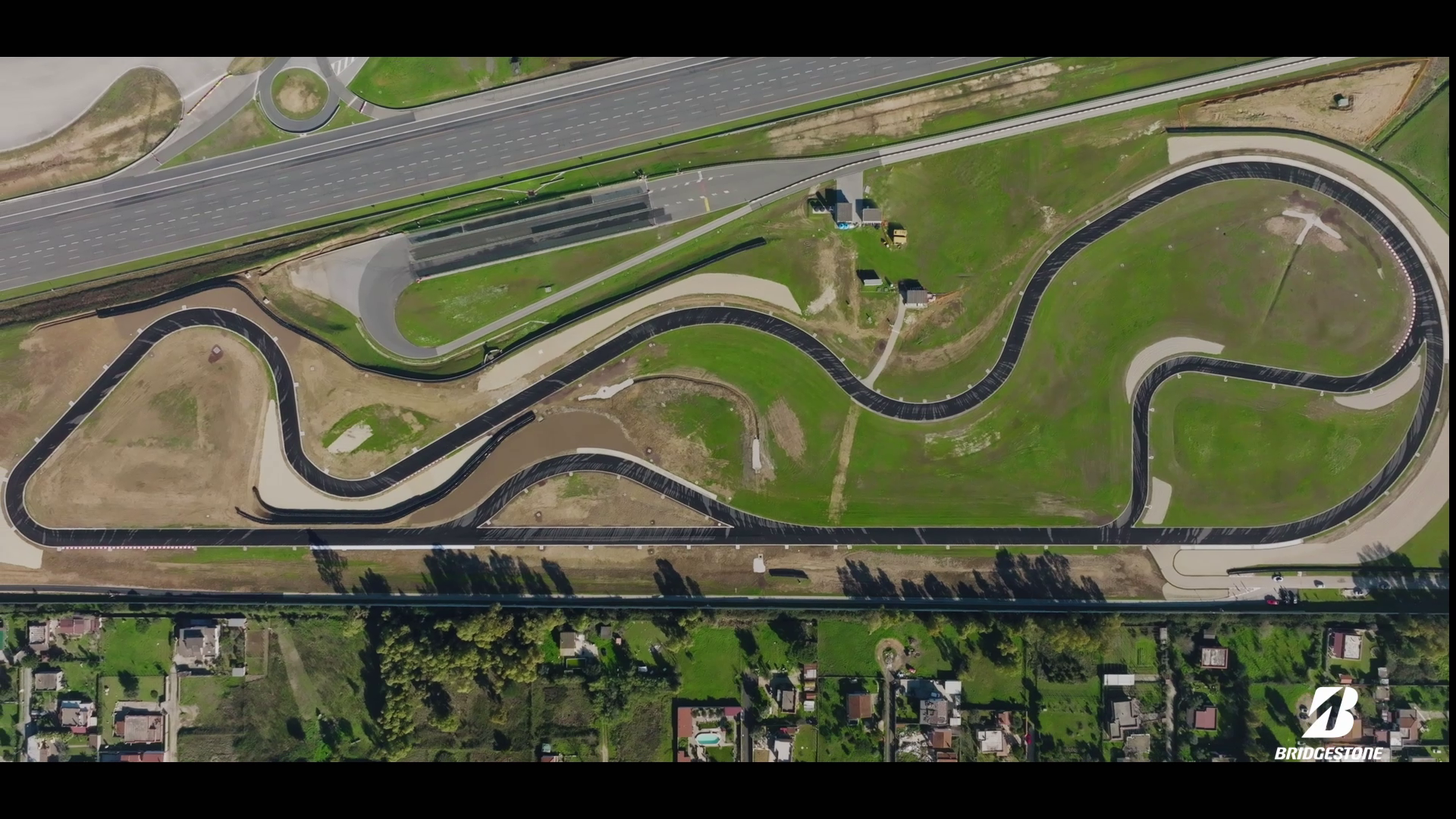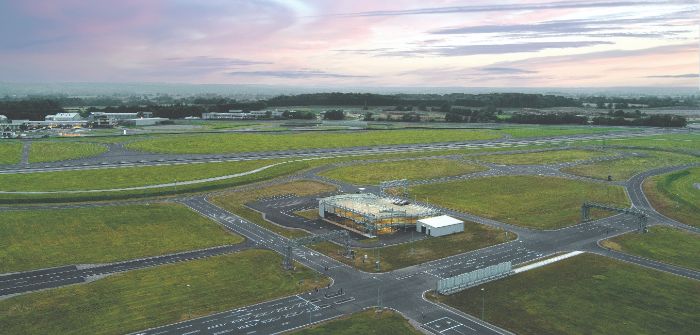Each international proving ground may have differing priorities, but all need to upgrade their practices with changing circumstances to deliver a safe, flawless service
The control and monitoring methods deployed at development tracks worldwide have evolved over the years and are constantly being adapted to new requirements. These systems are, beyond a shadow of a doubt, imperative for safety. Of course, general updates are important to ensure smooth running of operations and smart use of resources.
For example, at a basic level, at Michelin Laurens Proving Grounds in South Carolina, multiple Level 3 DC fast chargers for EVs have been installed, and outbuildings outfitted with fire systems to automatically alert security in the event of an issue.
“With the addition of fire alert systems in our outbuildings, we have updated our safety measures to enable indoor storage of electric vehicles for confidentiality,” says Michelle Phillips, engineering and services coordinator, senior on-vehicle test engineer, MLPG.
Furthermore, MLPG has purchased a UTV response vehicle with both fire-suppression and people-carrying capability to better service its off-road areas should a response be needed. Fire blankets have also been acquired to assist in the event of an electrified vehicle (or other) fire.
Phillips adds, “Our emergency response team training program has expanded over the last three years
to include more structure as well as additional training concentrations, such as specific EV modules.”
In terms of other general updates, the center has completely renewed its main pump-house controls and piping: “This pump house provides water to our wet skid pad and braking areas. These updates have resulted in a 75% reduction in water consumption, and added the ability to monitor and control remotely from our main building.”
At a basic level, handheld radios continue to be used, with each vehicle on track required to carry one.
Extra precautions
A recent development at Bridgestone EMIA’s proving ground in Italy is its new wet-handling track. To enhance safety, Argex aggregate has been applied in the potential runoff areas.
Gabriele Squarcialupi, head of testing at Bridgestone EMIA, explains that risk assessment is based on simulation data, which integrates a selection of suitable safety measures into the design phase.
He adds, “The Argex material is used instead of gravel and enables a shorter stopping distance in the event of runoff. As Argex is a light material, it has a better sink effect than gravel, so the vehicle sinks faster and stops in a short distance. Rollover tendency is also drastically reduced as evidenced by our internal tests.”
Since March 2022, traffic control has been based on GPS data that facilitates the monitoring of vehicles on the circuits, integrating access permission, emergency management and an automatic assistant system that aids implementation of basic rules. Each vehicle is equipped with a GPS system and connected via 4G protocol to a common network. Employees in the control tower can see the position of all vehicles in real time, including parameters related to safety risk.
Bridgestone EMIA is also working on services for connected vehicles, developing a protocol that will enable connectivity across the whole proving ground, even at very high speeds.
Electromobility has posed new threats to safety for all facilities, as Squarcialupi notes, “Besides the typical risks related to vehicle testing, we have had to review vehicle management and emergency procedures in case of electric shock hazard, especially on the wet tracks, and fire risk during recharging.”
Path follower
In the UK, Horiba MIRA recently launched its Assured CAV ecosystem. Control measures designed to support ADAS and connected car validation include an indoor positioning system in its parking facility, which enables Horiba MIRA to track test assets and control ADAS test targets in this sheltered environment.
“We have private 4G and 5G mobile networks and ITS G5 to provide connectivity throughout the facilities,” says David Wood, operations manager. “We have an RTK GNSS base station that enables correction of GPS signals to get a higher accuracy of vehicle locations, enabling controlled and repeated testing.”
Horiba MIRA is also in the process of implementing GPS-enabled radios for accurate tracking of users to eliminate ‘inaccurate’ time bookings and billing. “This also facilitates automated access control; for example, only allowing access if that user has the correct permit or licenses,” explains Wood.
Ashley Patton, chief engineer at Assured CAV, comments that identifying exactly what work is being undertaken is less straightforward these days than in the past. “For example, a tire tester may be conducting double lane changes at set speeds while an autonomous vehicle is undertaking a completely different set of tests without any precedent. Here a high level of understanding is required and an overview of multiple different customers, their needs and potential outcomes.”
Unique circumstances
Driverless and connected cars are a special case when testing, and require unique safety measures.
Historically, a safety driver acted as a backstop to take control during automated vehicle testing. But as systems develop, customers are performing tasks where there isn’t a driver in the vehicle or the person
in the car does not have traditional driver controls. Furthermore, there can be multiple cars requiring synchronization, moving on tracks together to create scenarios, plus soft targets and associated equipment such as robots and pulleys that need careful placement.
If an autonomous vehicle with total decision control is at low-level maturity, there is a chance an unexpected variable output may occur. For example, a ‘steer left’ input may result in the vehicle turning right, or the vehicle veers off if it thinks it detects an obstruction or misinterprets road markings.
“A lot more people are required on the ground as they need to set up scenarios and observe the testing. Their safe placement is paramount,” notes Patton. “Ultimately, regardless if it’s the ‘correct’ or ‘incorrect’ outcome of a test, we need to ensure all pedestrians are positioned safely and out of fallout zones.”
Other mitigations on-site include speed limits across the Assured CAV highway, curbs and railings are kept to a minimum, and roadside furniture is added only when necessary.
“We have updated our risk assessments and reviewed controls around autonomous vehicles. As this technology unfolds, it is important for us to have a common language around the technology, from which we can then derive potential risks and failures to ensure we have adequate control measures in
place,” concludes Patton.

Ready for anything
Add a load of snow and ice into the testing equation, and safety becomes even more complex to manage. Thus, with regard to control and monitoring, cold-weather service providers must be equipped to the maximum. What’s more, as the season is limited, upgrades are an obvious but crucial factor that ensure these facilities are considered a top choice by developers.
As Jukka Vuorinen, director at Wintertestcenter Service, Lapland Proving Ground in Finland, says, “As a private operator, we need to guess what our customers might need next. On the other hand, we need to get our investment back. [That’s] not an easy combination, especially with the development of EV charging infrastructure, and considering the pretty short season. In summertime [it is incredibly difficult] to compete with mid-European test grounds.”
Elsewhere, at the Colmis Proving Ground in Sweden, the Rajd proving ground management system supports testing activities, enabling continuous surveillance and immediate support to any vehicle
out on track at any given time. Per Gyllenberg, deputy manager and part owner, explains that all vehicles are connected to the Rajd proving ground management software. Occupants can be alerted of any security or safety regulation breaches and given assistance for general support or in emergencies.
Coinciding with the pandemic outbreak, Colmis digitalized its registration system. It is now contactless and provides a welcome package to visitors so they can familiarize themselves with the facilities before arrival.
Gyllenberg adds, “During the 2022/2023 winter season we are introducing a new ‘track status’ page for our customers, which will offer a detailed and regular report on external factors that can influence track preparation and status. This could include weather alerts, temporary regulation changes, incidents and maintenance works in progress. They can take these variables into account in their planning for a safer and more efficient testing schedule.”


